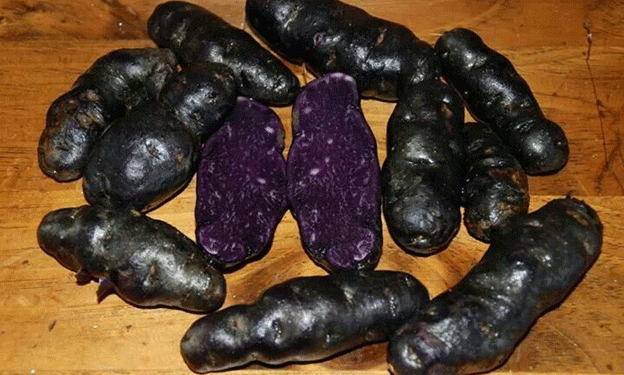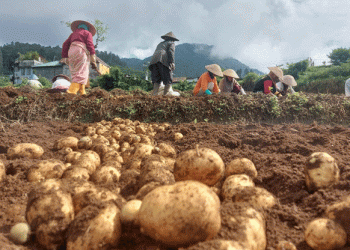The world of agriculture is vast, with traditional crops dominating the landscape for centuries. However, with the growing awareness of health and nutrition, the demand for more unique and nutrient-dense varieties is on the rise. This article spotlights the fascinating journey of Ravi Prakash Maurya, a farmer from Prayagraj, Uttar Pradesh, who turned a personal tragedy into a thriving agricultural venture. By embracing “black farming”—cultivating black potatoes, rice, wheat, and tomatoes—he not only distinguished himself in a crowded market but also contributed to a healthier food system.
The Journey from Journalism to Farming
Ravi Prakash Maurya was once set on becoming a distinguished journalist. He pursued journalism and worked in the media industry, even engaging with agriculture-related magazines. However, a family tragedy—his father’s untimely death—brought him back to his roots in farming. Driven by his deep interest in agriculture, Ravi saw an opportunity to combine his passion with innovation by cultivating black crops, which are known for their superior nutritional value compared to traditional varieties.
Why Black Crops?
Black crops, particularly black potatoes, rice, wheat, and tomatoes, have gained significant attention for their enhanced health benefits. These crops contain anthocyanins, powerful antioxidants that give them their dark color. Anthocyanins have been linked to a variety of health benefits, including anti-inflammatory properties, improved heart health, and reduced risk of chronic diseases. For instance, black potatoes have been found to contain more antioxidants than regular potatoes, making them a more nutrient-dense option for consumers.
In addition to health benefits, these crops offer farmers an opportunity to diversify their production and tap into premium markets. Black crops, being rarer and more nutritious, often command higher prices in the market. Ravi Prakash Maurya’s decision to cultivate these crops has not only set him apart but also provided him with a more profitable farming model.
Success with Black Potatoes
Among the black crops, black potatoes have been particularly successful for Ravi. These potatoes, unlike the common white or yellow varieties, offer more vitamins and antioxidants, which are becoming increasingly important for health-conscious consumers. Black potatoes can be used in a variety of ways, including in gourmet cuisine and processed food products, such as chips. The growing demand for healthier alternatives in the food industry is creating a strong market for these nutrient-dense crops.
Ravi’s unique farming venture has garnered attention from both the local community and agricultural experts. By choosing black potatoes, he has been able to deliver not just an innovative product but also a valuable source of nutrition for his customers.
Market and Profitability
In today’s agricultural landscape, differentiating oneself is key to profitability. Farmers like Ravi, who embrace innovative crops, can command higher prices due to the specialized nature of their produce. In Ravi’s case, his black crops are sold at premium prices, especially in health-conscious urban markets. This diversification into black crops allows farmers to mitigate the risks associated with traditional farming, such as price volatility and over-reliance on conventional crop varieties.
Farmers across India and beyond can learn from Ravi’s experience by exploring new varieties and experimenting with crops that offer not just sustainability but also profitability. As the demand for health-focused products continues to rise, black farming represents a promising direction for agricultural innovation.
Ravi Prakash Maurya’s transition from journalism to farming is a testament to how innovation in agriculture can lead to both personal and financial success. His decision to cultivate black potatoes, rice, wheat, and tomatoes has opened new doors in a competitive industry. By offering more nutrient-rich and premium products, he has demonstrated the potential of black farming to transform traditional agriculture into a more sustainable and profitable venture. Farmers who adopt similar innovative approaches can not only improve their livelihoods but also contribute to a healthier, more resilient food system.







